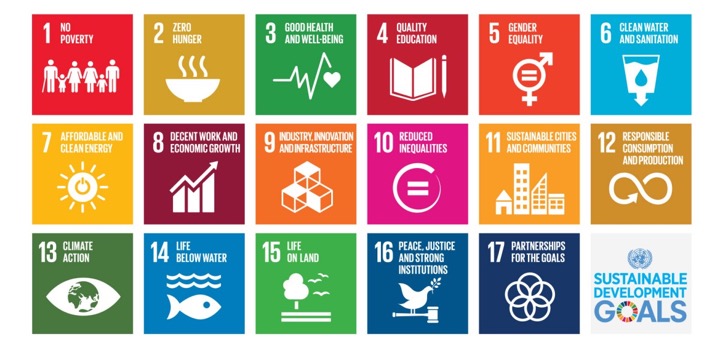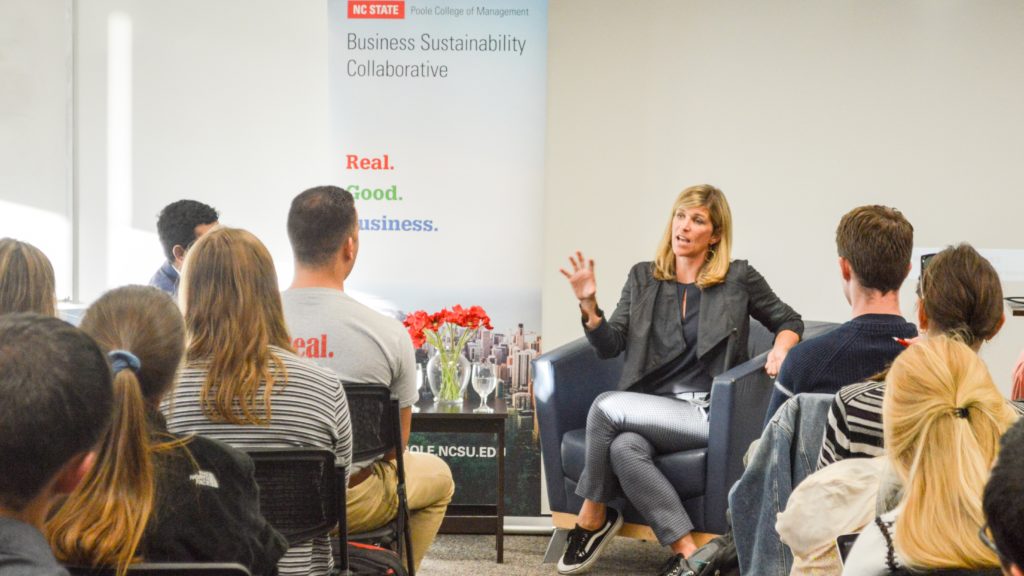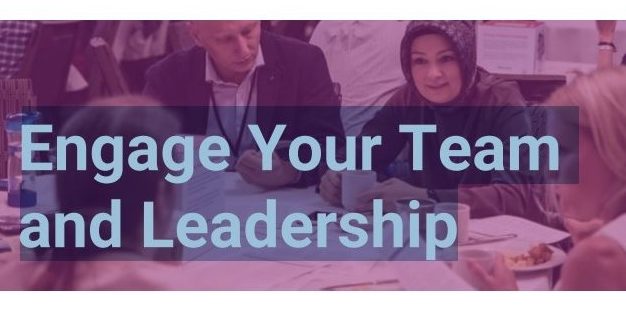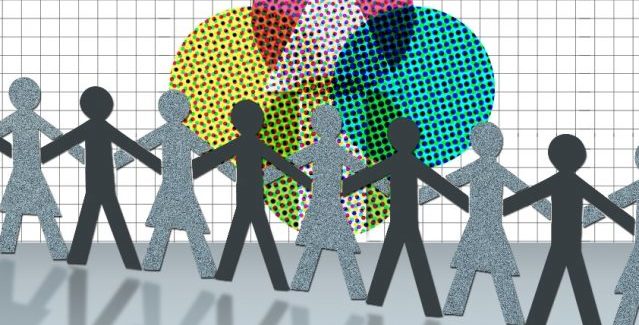Section 3: The B Impact Assessment
View section summary, discussion prompts, activities and resources and more for Section 3: The B Impact Assessment of The B Corp Handbook Instructor's Guide.
Summary
Approximately 150 minutes reading time
Summary
Section 3 describes the B Impact Assessment (BIA), a comprehensive, free tool generated by B Lab, to assess, compare, and implement improvements that are good for workers, the environment, communities, governance, and customers. This section provides insight, resources, and best practices to help companies strengthen their social and environmental impact, whether or not they are pursuing certification. B Lab has established an independent standards advisory council that designs and updates the BIA on a three year cycle.
How to Use Business as a Force for Good (page 62)
The B Impact Assessment (BIA) is a free, confidential, and easy-to-use online management tool to help businesses assess, compare, and improve their social and environmental performance. This online assessment takes two to three hours to finish. B Lab recommends that the first draft be completed by the CEO or another champion who has a broad perspective on the company’s strategic direction and operations. The assessment is divided into the Impact Areas of Workers, Community, Environment, Governance, and Customers. Initially, the BIA measured companies on a scale from 0 to 200 points, with companies scoring 80 or above qualifying for certification. The ceiling of 200 points was removed in V6 of the BIA, released in January of 2019. The resulting B Impact Report is a one-page summary that shows how the company performed in each section and can help businesses create a plan to improve performance. In each Impact Area, the authors:
- Highlight important ways businesses can affect change
- Explain why these actions are rewarded on the assessment
- Give advice as to how the practice can be implemented
- Integrate diversity, equity, and inclusion (DEI) considerations
Worker Impact (page 68)
There are many aspects of workers to consider. The section highlights how the BIA measures the efforts of employers to support their employees and offers tips, resources, and advice to help companies make improvements.
Community Impact (page 92)
Behaving as a socially and environmentally responsible corporate citizen will benefit the organization by improving their ability to attract and retain talent, generate positive media attention, and increase the goodwill of their customers. Transparency can encourage other companies to follow suit and shows stakeholders that its commitment to multiple social values is authentic and verifiable.
Environmental Impact (page 122)
Addressing and working to improve the impact that a company has on the environment is not only better for the planet, but will also improve a company’s profitability in the long run. Many companies have found that improving their environmental performance helps them to attract top talent, create strong relationships with suppliers, and increase trust and credibility with their customers. Further, the consequences of climate change have historically had a disproportionate impact on indigenous communities, women, the elderly, those with disabilities, and the poor.
Governance Impact (page 136)
Building a business that is good for the environment, good for workers, and good for the community is a challenge in and of itself. Once established, how does a company ensure that the purpose-driven policies and practices remain in place, especially through changes in employees, ownership, and management? One of the great benefits of being a Certified B Corp is having the ability to ingrain the company’s purpose-driven goals into its mission statement and legal DNA.
Customer Impact (page 151)
Excellent customer service and offering quality products not only is a core component of a company’s strategy but is also one of the primary ways for a business to cultivate long-term relationships and create value and positive impact for these stakeholders.
Discussion Prompts
- What do you see as the most challenging section in the assessment (workers, community, environment, governance, or customers)? Why do you think it would present a greater challenge than others? Is there a strategy to minimize this challenge? Will this differ by industry, size, or current legal status?
- Who do you think should complete the B Impact Assessment for a company? Is there a good way to avoid personal bias when making selections?
- Do you think it would be easier or more difficult for private companies to complete the assessment compared to publicly traded companies?
- Many organizations have taken the BIA even if they didn’t want to pursue the certification. Why do you think taking the BIA can be valuable for an organization if they don’t pursue the certification?
- How does the assessment differ in different regions of the world?
About The UN Sustainable Development Goals

“This guide is an essential resource for faculty who believe in the power of business as a force for good and who aspire to be on the leading edge of business education. The B Corp Handbook and this Instructor’s Guide serve as a catalyst for educating, inspiring, and empowering the next generation of business & community leaders.” – Kristin Joys, Director of the Social Impact & Sustainability Initiative and Social Entrepreneurship Lecturer, Entrepreneurship & Innovation Center, Warrington College of Business, University of Florida
Go Further…
Case Discussions
B Lab: Can it Scale Business as a Force for Good?, Harvard Business Publishing, Christopher Marquis, Matthew Lee, Jun 14, 2015 ($7.46) More than 30,000 companies use the B Impact Assessment to measure, compare, and improve the impact they have on their workers, communities, and environment. Challenge your students to think about tangible metrics for business success beyond Profit & Loss.
Case studies of impact measurement using the B Impact Assessment, These frequently updated page contains mini cases studies spotlight how businesses have used the B Impact Assessment to improve their overall impact
Quick Impact Assessment
Identify a local company and conduct a quick assessment based on publicly available information.
- Individual or group projects outside of class
- 2-3 hours
DEI Assessment
Work with a local company to conduct a diversity, equity and inclusion assessment (See Appendix B: Sample Diversity, Equity, and Inclusion Surveys p 195)
- Group project outside of class
- 6-8 hours
AIM2Flourish Assignment
AIM2Flourish is a global initiative that aims to steer future business leaders towards achieving the UN Sustainable Development Goals (UNSDGs) and a flourishing world for all. Supported by the AIM2Flourish.com global learning platform, business students around the world are using Appreciative Inquiry (strength-based interviews) and the UNSDGs as a lens to search out and report on world-changing business innovations. Select one of the B Corp 2018 “Best for the World” Honorees to conduct an AIM2Flourish interview and submit to the platform.
- Individual or group assignment outside of class
- 4 – 6 hours
UNSDG Alignment
Map the alignment between the sections of the B Impact Assessment and the UN Sustainable Development Goals and describe how policies and practices measured in the BIA could drive progress on the UNSDGs. See Appendix B for a key that annotates the UNSDG# that is impacted by considering these policies and practices.
- Group project outside of class
- 6-9 hours
Resources
Articles
New Belgium, Embracing Open-Book Management to Fuel Employee Engagement and Corporate Sustainability, UNC Kenan-Flagler Business School, Jessica Yinka Thomas & Anne Claire Broughton, February 14, 2012.
- Highlighting and describing the benefits of open-book management that enables employees to feel more engaged with their organization.
Pending B Corp Status, B Lab.
- Outlines how companies that have been in business for fewer than 12 months, can apply for Pending B Corp status.
3 Ways the Top-Performing B Corps Improve their Impact, B Lab, Elizabeth Freeburg.
- Three suggestions of ways to improve a company’s B Impact Score, including “Reduce, Reuse, Recycle, Renewable,” prioritizing employee wellness, and formalizing policies.
Allbirds’ Reported Billion-Dollar Valuation: What Makes These Strange Birds Fly, Forbes, Jay Coen Gilbert, January 9, 2019.
- Allbird faced many obstacles to become the successful, sustainable company they are today. Allbird investors were fully supportive of management’s decision to become a certified B Corp.
Athleta’s CEO On Balancing Strength With Softness, Fast Company, Aaron Hurst, May 24, 2017.
- Athleta, a certified B Corp, values their employees at all levels as an integral part of their structure.
3 steps to becoming a certified B Corp, BDC.
- B Corporations are highly successful and the main three steps to becoming a certified B Corp are believing in the power of business as a force for good, taking the B Corp assessment, and changing a company’s articles of incorporation.
All About the Sustainable Development Goals: Get Up-to-Speed on Agenda 2030, April 25, 2019, Medium (5 minute read).
- Discusses how B Lab and Partners are developing a tool to help businesses chart their progress on the Sustainable Development Goals.
Mission-led employee-owned firms: The Best of the Best, by Sarah Stranahan and Marjorie Kelly, Fifty by Fifty, 2019.
- “In its research, Fifty by Fifty found employee-owned B Corps achieved overall B Scores (an assessment of environmental and social impact done through the nonprofit B Lab) that were on average 20 points higher than similar firms that are not employee owned.”
Videos
Greyston Bakery, April 10, 2012 (2:23 mins), “With a progressive, open-door hiring policy, Greyston welcomes people who may have faced barriers to employment before. The profits from the bakery are funneled back into the community, funding programs such as after school care, low income housing, and support for people living with HIV/AIDS.”
Ben & Jerry’s Social Mission, January 12, 2015, (3:16 mins), “Ben & Jerry’s operates on a three-part mission that aims to create linked prosperity for everyone that’s connected to our business: suppliers, employees, farmers, franchisees, customers, and neighbors alike.”
Eco-Build: Bricks with Benefits, Real Leaders – ShortCuts, June 27, 2016 (2:59) – Problem: Deforestation, high costs. Solution: Sustainable brick making.
Ava Technologies: Future of Food is Here, Real Leaders – ShortCuts, November 14, 2016 (3:03) – Problem: Food insecurity. Solution: Smart home gardens.
HydroFlask: Message in a Bottle, Real Leaders Magazine, August 7, 2018 (2:57) – Problem: Plastic water bottles, responsible companies. Solution: Creative thermos.
Podcasts
Next Economy Now Podcast, Ep. 142: Jed Emerson: The Purpose of Capital, (1:00:14, Jan 15, 2019). Ryan Honeyman from The LIFT Economy connects with Jed Emerson, originator of Blended Value and Total Portfolio Management, to discuss why we often get sidetracked into the “how” of impact investing, instead of deeply exploring “why” we are doing it. He also imparts a request for listeners as they think about how to actualize his thoughts/advice in their daily lives.
Next Economy Now Podcast, Ep. 131: Donna Morton: A Chance to Change Finance for Good, (52:58, Oct 16, 2018). Donna Morton, CEO and co-founder of Change Finance, sits down with Andrew Baskin of the LIFT Economy to talk about the backstory of Change Finance and the innovation of financial products stemming from women & marginalized groups, how ETFs can be leveraged by financial activists to take back our economy with love, respect, and dignity while boycotting the economy that is killing people and planet, as well as her unapologetic embrace of rendering love and care and empathy in business and finance at a system-wide level.
Next Economy Now Podcast, Ep. 113: Jay Coen Gilbert: B Corps & Fixing the Source Code Error in the DNA of Business, (57:03, June 13, 2018). In this episode, you will hear from Jay Coen Gilbert, co-founder and former CEO of AND1 as well at the co-founder of B Lab, the non-profit organization that serves a global movement of people using business as a force for good.
Next Economy Now Podcast, Ep. 47: John Abrams: Behind the Scenes at the World’s Top Scoring B Corp, (48:02, Jan 14, 2017). John Abrams, founder and CEO of South Mountain Co, the highest-scoring B Corp in the world, sits down with Shawn Berry from the LIFT Economy to discuss John’s background, climate change and the need for solutions, and the triple bottom line peer business support network among a host of other topics.
Maximizing the BIA for B Corp Certification Webinar (61 minutes), “Learn how to make the most of the new B Impact Assessment platform to measure a company’s positive impact and complete the review process. Hear what it takes to go from signing up to completing certification or recertification.”
Flory Wilson on Metrics, GIIRS and B-Analytics (45 minutes), “Flory Wilson is the Director, International for GIIRS at B Lab. She joined B Lab in April 2010, working on the core team that has launched the Global Impact Investing Rating System (GIIRS) Ratings & Analytics.”
How I Built This Podcast, Eileen Fisher, February 25, 2019 (47 minutes), Guy Raz explores stories behind some of the world’s best known companies.
How I Built This Podcast, KickStarter, December 31, 2018 (43 minutes), Guy Raz explores stories behind some of the world’s best known companies.
Other Resources
B Lab’s FAQs on B Impact Assessment
King Arthur Flour Benefit Corporation Annual Report 2017
Section 4: The Quick Start Guide



